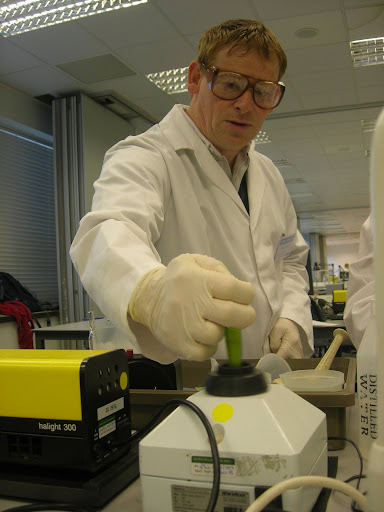Book 3 is a little weird, it is actually two books it seems to me.
Part 1 looks at crystals in some depth.
It goes through the various forms of crystal structures that can be made, and looks at ionic bonding that is prevalent in crystals.
I found this quite hard going, there is a lot of 3-d visualisation to get the ideas, but its not always easy as there is a lot going on in some of the structures. Trying to work out the common patterns is not easy, and I found the 3-d visualisation software though good, didn't really help as it lacks a good perspective. You get to make one or two models too, which sometimes helps, but the complex ones can't be made. There are a number of videos also showing you how they are constructed, so you can't fault them for trying - but really none of it made much sense to me until the tutorial.
Part 2 looks at stereochemistry, and chirality.
First it starts by looking at the effect double bonds can have on structure. Because double bonds stop the free rotation of molecules, you can have two different forms of the same molecule, and then you get into the whole "how do you name them" discussion. Having worked through this and got some rules on exactly how to name things which look different but have the same components, you get into chiral chemistry. This is where typically a carbon has 4 different things attached to its different bonds, and this allows two possible configurations of the molecule. These structures also have interesting optical properties as they rotate polarised light.
However it doesn't end there, as you can have molecules with more than one chiral center, and then things get really complicated with stereo isomer, diastereomers, entaniomers, and meso formations. If crystals gave you a headache, well you haven't felt anything yet!
Finally the book finishes up with a case study on liquid crystals.
skip to main |
skip to sidebar

Life studying for a 2nd time around with the Open University and others.
My Latest Blip
About Me
Topics
- A251 (7)
- astronomy (1)
- CMA (4)
- coursera (8)
- courses (40)
- degree (1)
- ECA (2)
- exam (7)
- experiment (3)
- G+C (7)
- html (1)
- intro (1)
- java (1)
- quantum mechanics (1)
- residential (43)
- S103 (19)
- S170 (1)
- S171 (1)
- S193 (1)
- S194 (4)
- S196 (1)
- S204 (21)
- s205 (18)
- S282 (17)
- s283 (8)
- S320 (12)
- S366 (11)
- S377 (10)
- SD329 (9)
- sk195 (2)
- sxr103 (3)
- SXR208 (9)
- sxr270 (7)
- sxr270tutor (7)
- SXR375 (9)
- SXR376 (8)
- TMA (49)
- tutorial (4)
- udemy (3)




No comments:
Post a Comment